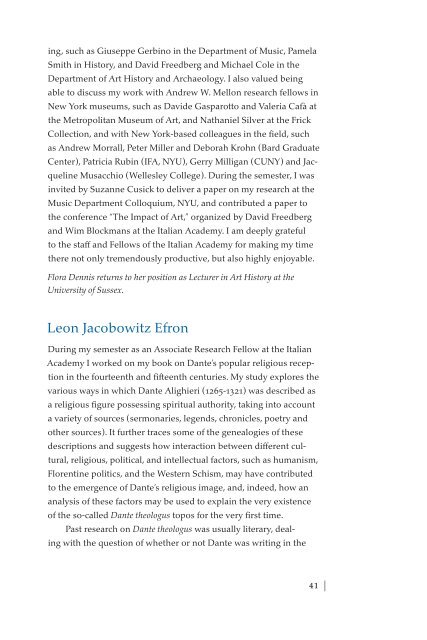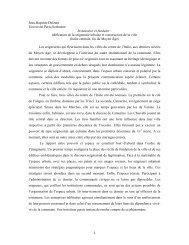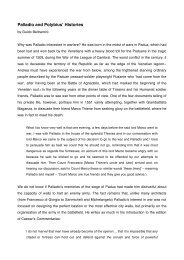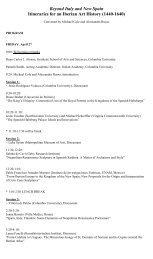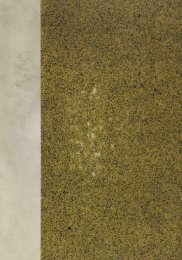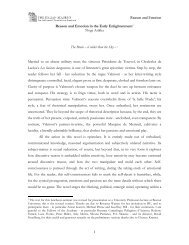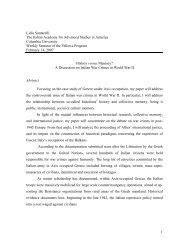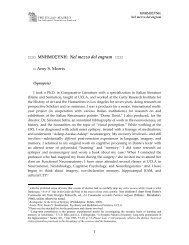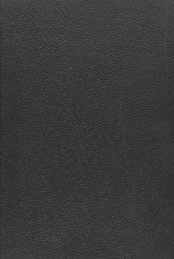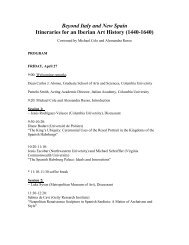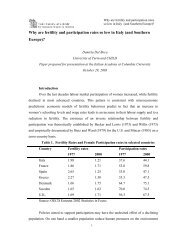2011-2012 - The Italian Academy - Columbia University
2011-2012 - The Italian Academy - Columbia University
2011-2012 - The Italian Academy - Columbia University
You also want an ePaper? Increase the reach of your titles
YUMPU automatically turns print PDFs into web optimized ePapers that Google loves.
ing, such as Giuseppe Gerbino in the Department of Music, Pamela<br />
Smith in History, and David Freedberg and Michael Cole in the<br />
Department of Art History and Archaeology. I also valued being<br />
able to discuss my work with Andrew W. Mellon research fellows in<br />
New York museums, such as Davide Gasparotto and Valeria Cafà at<br />
the Metropolitan Museum of Art, and Nathaniel Silver at the Frick<br />
Collection, and with New York-based colleagues in the field, such<br />
as Andrew Morrall, Peter Miller and Deborah Krohn (Bard Graduate<br />
Center), Patricia Rubin (IFA, NYU), Gerry Milligan (CUNY) and Jacqueline<br />
Musacchio (Wellesley College). During the semester, I was<br />
invited by Suzanne Cusick to deliver a paper on my research at the<br />
Music Department Colloquium, NYU, and contributed a paper to<br />
the conference “<strong>The</strong> Impact of Art,” organized by David Freedberg<br />
and Wim Blockmans at the <strong>Italian</strong> <strong>Academy</strong>. I am deeply grateful<br />
to the staff and Fellows of the <strong>Italian</strong> <strong>Academy</strong> for making my time<br />
there not only tremendously productive, but also highly enjoyable.<br />
Flora Dennis returns to her position as Lecturer in Art History at the<br />
<strong>University</strong> of Sussex.<br />
Leon Jacobowitz Efron<br />
During my semester as an Associate Research Fellow at the <strong>Italian</strong><br />
<strong>Academy</strong> I worked on my book on Dante’s popular religious reception<br />
in the fourteenth and fifteenth centuries. My study explores the<br />
various ways in which Dante Alighieri (1265-1321) was described as<br />
a religious figure possessing spiritual authority, taking into account<br />
a variety of sources (sermonaries, legends, chronicles, poetry and<br />
other sources). It further traces some of the genealogies of these<br />
descriptions and suggests how interaction between different cultural,<br />
religious, political, and intellectual factors, such as humanism,<br />
Florentine politics, and the Western Schism, may have contributed<br />
to the emergence of Dante’s religious image, and, indeed, how an<br />
analysis of these factors may be used to explain the very existence<br />
of the so-called Dante theologus topos for the very first time.<br />
Past research on Dante theologus was usually literary, dealing<br />
with the question of whether or not Dante was writing in the<br />
41 |


